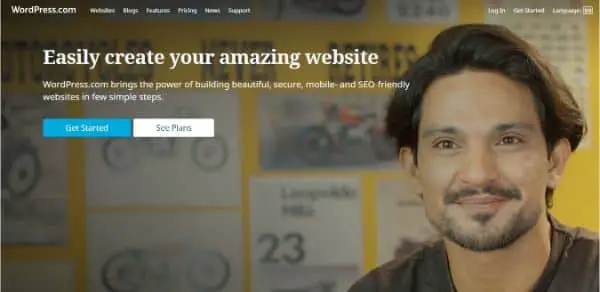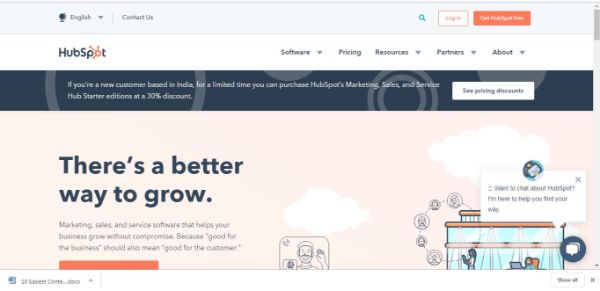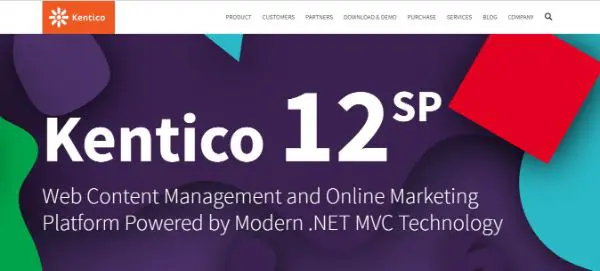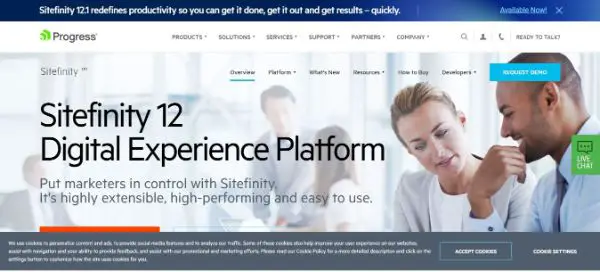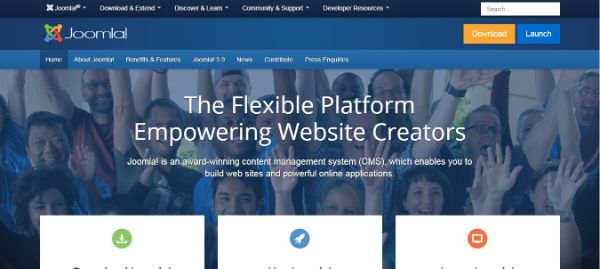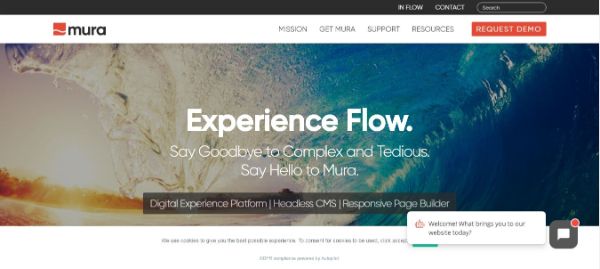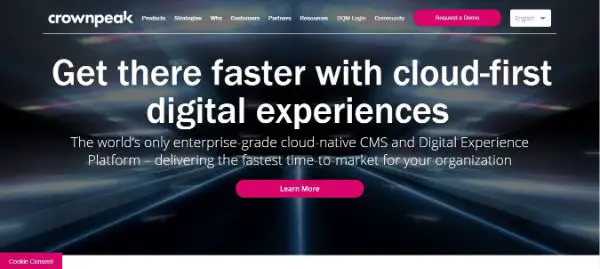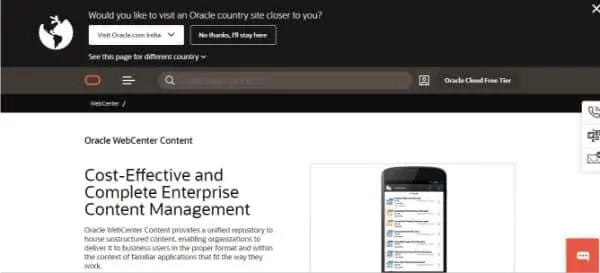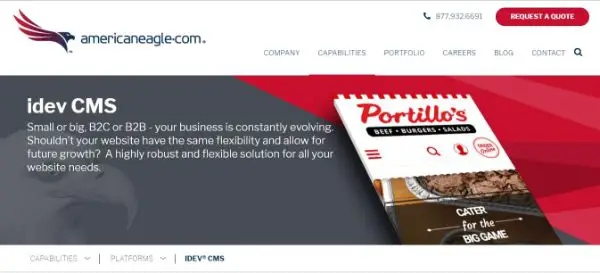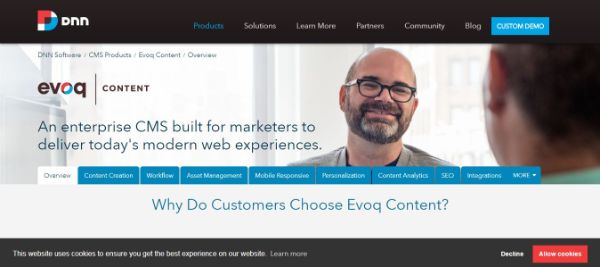Line25 is reader supported. At no cost to you a commission from sponsors may be earned when a purchase is made via links on the site. Learn more
The significant benefits of using a CMS (content management system) are that such software is often user-friendly. These programs enable users to translate their ideas to practicality quickly. The maintenance and updates are regular and easy to handle. It is highly cost-efficient with out-of-box solutions, freeware, or open-source. There is a broad scope for functionality using a large number of extensions and plugins. There is a great developer and community support as well.
A Content Management System refers to a software application that can be used for creating and modification of digital content. CMS is generally used for web content management and enterprise content management. ECM (Enterprise Content Management) supports multiple users in a collaborative environment by integrating digital asset management, document management, and record retention. Whereas, WCM (Web Content Management) is a collaborative authoring of websites and can include graphics, photos, audio, videos, programs, and maps that display content and interact with the user. Most CMS systems have two aspects to them: Content Management Application (CMA), which is the front-end user interface that allows users even who have limited expertise to add, modify or remove content from a website. The second aspect is the Content Delivery Application that compiles and updates the website.
Hence all these advantages act as parameters of a sound CMS system, and it becomes essential to find out the best CMS software available to ensure you can design a great website with absolute ease. This is why we discuss the 10 Easiest Content Management Systems (CMS) of the Year; you should try for your next website.
1. WordPress.org:
WordPress has always been a popular option for bloggers for its easy-to-use and open-source flexibility. It has a million plugins to choose from, and it enables you to add on anything you can imagine or want to add to your website. WordPress is excellent software for people who are just starting a career in digital marketing and web development. You can build websites for others and get paid or just build a personal site. Build anything on WordPress which can be from blogs to eCommerce.
It was launched in 2003 as a simple blogging site and dominant open-source web development platform and is one of the most effective and widely used CMS systems. Websites like The New York Times, CNN, and music celebrities like Jay Z and Katy Perry, and also a few of the Fortune 500 companies such as eBay, UPS have used WordPress designing and development.
The few advantages of this CMS is that it is very cost-effective, it allows you to update your site from anywhere provided you have access to the internet, it is SEO ready and it is excellent for in links as each new blog entry goes to the RSS feed which makes it easy for others to syndicate your blog across other websites and directories. It has a responsive web design which eradicates the need for developing separate websites for different devices.
WordPress has an absolute advantage over the other websites in a way that it allows the user to update content as quickly and as many times as you want which is crucial in this content-driven competitive market. It also makes the process a lot easier and less complicated. It also helps build credibility within a user’s niche if he/she continually keeps updating their website content as per the ongoing trends or updates.
2. HubSpot:
HubSpot is a great platform that cuts the hassle and cost of integrating all of the requisite components for digital marketing. It does so by providing all those features & plugins in one all-inclusive package. The best part of HubSpot is that it offers what you see is what you get approach. This enables the users to create precisely what they see without having to visualize any element in their mind, and use minimum knowledge on how to edit. The CMS comes with a good setup SEO support, responsive designs, multi-device, and cross-browser testing, also many personalizations offers.
Many traditional content management systems gained popularity for allowing users to manage and update their content on their website easily; however, HubSpot takes it one step further by providing smart content that delivers targeted content to a specific group of people. It is configured in a way that it identifies people from their buying journey’s lifecycle stage or contact list. There is a custom template builder which lets you customize a design to a great extent without having any prior knowledge in website design. HubSpot has a unique approach to email marketing, as it has an email workflow that sends a series of emails to the clients depending on the client’s online behavior that makes the mail reach them at the right time and hence increases the chances of them reading it exponentially.
3. Kentico:
Kentico is the all-in-one CMS that allows the user to build and manage their website, manage eCommerce, publish their content and run marketing campaigns from one platform. It has a clean User Interface and also a ‘What You See is What You Get (WYSIWYG) editor. Kentico claims to be the only ASP.NET Model View Controller support CMS, which is a web development platform that is provided by Microsoft, used for creating website applications.
The support for multilingual content allows managing websites in multiple languages, and also is an added benefit largely appreciated as the reach of the potential visitor’s increases exponentially as the barrier of language gets diluted. The open API system allows endless possibilities for integration and its advanced scalability ensures that you won’t ever outgrow the platform. Since security is Kentico’s one of the top priorities it gives you features like Double Opt-in Registration, User Management, Module Permissions which allows you to take advantage of one of the authentication services provided by Kentico or use one of your authentication services into the system. It is the choice of some popular companies like Starbucks, Mazda, and Gibson Guitars.
4. Sitefinity:
Sitefinity has a good user interface making it easy for new users to operate this platform. There are several widgets, SEO optimization, A/B test functionality, eCommerce, forms, and easy accommodation for large businesses that need to manage more than one brand across multiple regions. There are connectors for Marketo, Salesforce, Microsoft Dynamics CRM, Sharepoint, and prebuilt marketing tools as well. The visitors of websites are shifting towards browsing from mobiles more than desktops these days.
This is why many marketers are strategizing their website promotion on mobile phones. Sitefinity identifies this trend and allows developing optimized websites for a seamless mobile browsing experience. It takes it a step further by allowing you to create apps to reach out to more people. Digital Asset Management is a feature of Sitefinity that allows you to organize file hierarchy, tag the files and make use of metadata for searching for files. This makes it easy to manage pages as you keep updating more pages over the years as your website grows.
5. Joomla:
Joomla is another popular CMS system that is cost-free like WordPress. It has over 75 million websites under its belt. There are thousands of extensions and ready-to-use themes. Most people find it easy to use Joomla even with zero technical expertise. There is a little need for customization from the user’s end to get all the features of a premium CMS system that you might expect to get out of the box. Joomla can be used to make a website of any category. Irrespective of whether it’s a small, personal blog or a huge online store with thousands of pages.
It is very flexible, reliable, and provides a one-stop solution for all purposes. Joomla has support for all social media networks and creating links for them is very easy. It is great for managing small websites as it gives you complete ease and control of maintaining them yourself. The plugins are greatly categorized, which makes the user experience of searching for essential plugins a lot friendlier.
6. Mura Content Management Systems:
Mura is a little specific for people who can take full advantage of its potential as a CMS. It works best for developers, programmers, executives, designers, and government organizations. Being a platform that is open-source, it has many advantages such as easy-to-use experience moreover also increases productivity. It provides support for mobile optimization, SEO optimization, licensing, posting across several platforms, and scalability, among other various features. There is support for multi-sites with a strong CMS system that allows managing multiple websites with a single code base. Switching between sites is also smooth using the administration panel providing a seamless multitasking experience. It uses modern web technologies such as AJAX to improve the user experience for developers and content managers; hence, it has great content management capabilities and also content architecture.
7. CrownPeak:
CrownPeak has a great user experience across almost all the platforms. It allows the user to create great websites without prior technical knowledge. It has a powerful cloud-native platform. This cloud platform has a built-in quality assurance that helps you with all the tools needed for creating high-quality, contextual experiences. Once you publish your website using CrownPeak, you can build and edit content in-line or take advantage of editing with WYSIWYG controls. You can create and publish content on one site or hundreds of websites at the same time. There are thousands of custom models and templates to meet any content requirement moreover it also supports A/B testing and targeting rules. There are translation tools and content localization that help reach thousands of people and at the same time, moreover keeping the content authentic as well.
8. Oracle:
Oracle WebCenter Content has a single storage facility to house unstructured content, enabling business organizations to deliver it in the right style to business users and within the factors of known applications that fit their working style. It is an enterprise-level content management system with end-to-end management from inception to achievement. It is best suited for large, established companies. Their customer support is credible as they continuously maintain their CMS quality by solving bugs as soon as possible. It is an enterprise-level CMS that requires a minimum 10-user purchase which makes it a little expensive as compared to other CMS systems.
9. idev Content Management Systems:
idev CMS comes across as an ideal CMS solution. It is designed to grow in sync with your business. Right from smaller start-ups to large-scale businesses, this platform is widely used. Its users love its ease of learning and using. For page building, it uses WYSIWYG which lets the user create new pages as per need. They also allow the user to customize content wherever required and build contact or search forms with ease. The platform it provides is very developer-friendly and allows flexibility of customization wherever needed. It is ideal for customer support. The software was built and is updated and implemented by the same group of people. This means there would be no ambiguity as to whom to call for support. Another option would be to wait for a long time before an official update to improve and fix bugs.
10. Evoq Content:
Evoq Content is one of the Content Management Systems that works best for the IT and marketing departments alike given its enterprise nature. Firstly, it strikes a good balance between providing the right set of functionalities and at the same time, being easy to operate. Secondly, it has content creation features, and it is SEO-ready. Moreover, it also has the added benefit of workflows which let several users interact with each other. Doing so also allows personalization to a large extent. This makes it possible for users to implement marketing campaigns easily. It is also an open platform source and has many choices for themes that can be tailored as per need.
It is a great CMS platform for saving time. The software understands key page metrics which eradicates the need of having a separate analytical system such as Google Analytics. It captures many aspects of page views, conversions, bounce rate, and traffic sources. All these factors help the user understand and improvise on their strategy accordingly. Evoq gives you the freedom to link your Google Analytics via an in-built connector.
Conclusion
These are the 10 easiest-to-use Content Management Systems we’ve discovered. Take some time to investigate each one before jumping in. You have to know exactly all that is needed to build and launch a website with each one. Above all, make sure the one you choose is aligned with your long-term marketing and development plans. Getting started is the easy part – having to change over to another platform is not.
